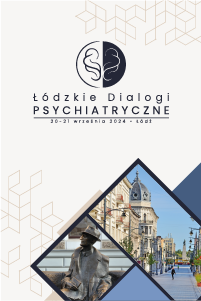The comparison of clozapine and haloperidol effects on plasma thiol groups in healthy subjects
Anna Dietrich-Muszalska1,2, Anna Kwiatkowska1, Justyna Kopka1
 Affiliacja i adres do korespondencji
Affiliacja i adres do korespondencjiDifferentiated effects of antipsychotics: haloperidol and clozapine on oxidative stress biomarkers were analysed. It has not been determined yet in what way clozapine and haloperidol affect human plasma thiol groups (-SH). The study was aimed at establishing of the effects of haloperidol and clozapine, in doses recommended for treatment of acute episode of schizophrenia, on free thiols in human plasma under in vitro conditions. Material and methods: Blood for the study was collected from 10 healthy male volunteers (aged 24-26 years) for ACD solution. Active substance of the drugs was dissolved in 0.01% dimethyl sulfoxide to the final concentrations (haloperidol 4 ng/ml and 20 ng/ml; clozapine 350 ng/ml and 420 ng/ml) and incubated with plasma for 24 hours at 37°C. Control samples were performed for each experiment (without the drug). The free thiols level was measured using the Ellman method (acc. to Rice-Evans, 1991). The results were analysed using the paired Student t-test (StatSoft Inc., Statistica v. 6.0). Results: After 24 hours’ incubation with plasma, haloperidol in concentrations 4 ng/ml and 20 ng/ml and clozapine in concentrations 350 ng/ml and 420 ng/ml caused statistically insignificant, as compared to control samples (without the drug), modifications in the level of free thiols (p>0.05). Conclusions: Clozapine and haloperidol in concentrations corresponding to doses recommended for treatment of acute episode of schizophrenia, do not induce significant changes in the concentration of free thiols in plasma.






















